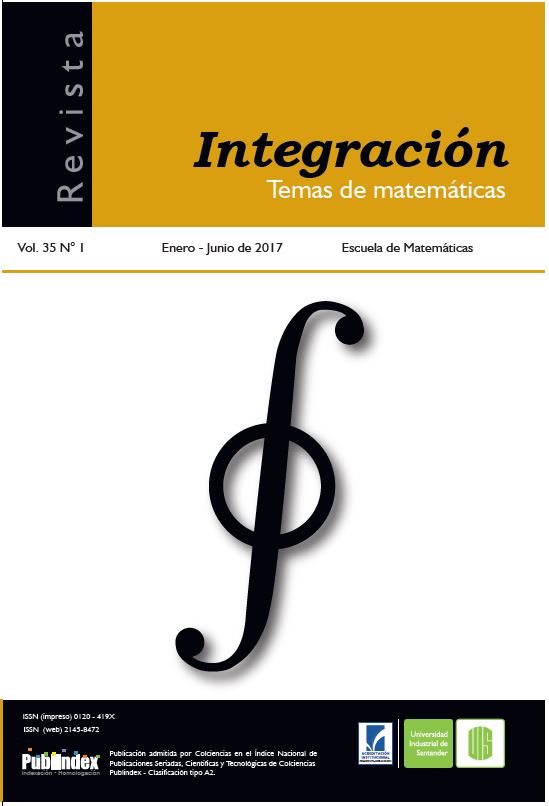Publicado 2017-08-09
Palabras clave
- Autocorrelación,
- Datos faltantes,
- Kriging,
- Predicción,
- semivariograma
- Series de tiempo,
- Variograma ...Más
Cómo citar
Resumen
La geoestadística puede usarse como método de predicción de datos faltantes en series temporales. El procedimiento se basa en el estudio de la estructura de autocorrelación temporal de la serie de tiempo por medio de la función de variograma, que es estimada por mínimos cuadrados (geoestadística clásica) o por máxima verosimilitud (geoestadística basada en modelo), y en usar posteriormente Kriging para hacer predicción de los valores faltantes. En este trabajo se comparan a través de simulación las dos aproximaciones (geoestadística clásica y basada en modelo) en el contexto de series temporales autorregresivas.
MSC2010: 60G15, 62M10, 62M20, 62M30, 86A32.
Descargas
Referencias
[2] Cressie N., Statistical for Spatial Data, John Wiley & Sons, New York, 1993.
[3] De Iaco S., Palma M. and Posa D., “Geostatistics and the Role of Variogram in Time Series Analysis: A Critical Review”, en Statistical Methods for Spatial Planning and Monitoring ( ed. Montrone S. and Perchinunno P.), Springer-Verlag, Milan, 2013.
[4] Diggle P. and Ribeiro P., Model-based Geostatistics, Springer-Verlag, New York, 2007.
[5] Dowdall M., Bjorn L., Gerland S. and Rudjord A., “Geostatistical analysis as applied to two environmental radiometric time series”, Environmental Monitoring and Assessment 83 (2003), No. 1, 1–16.
[6] Ghahraman B. and Ahmadi F., “Application of geostatistics in time series: Mashhad annual rainfall”, Iran Watershed Management Science and Engineering 1 (2007), No. 1, 7–15.
[7] Haslett J., “On the sample variogram and sample autocovariance for non-stationary time series”, Journal Royal Statistical Society Series D 46 (1997), No. 4, 475–484.
[8] Hollander T. and Wolfe D., Nonparametric Statistical Methods, John Wiley & Sons, New York, 1999.
[9] Ljung G., “A note on the estimation of missing values in time series”, Comm. Statist. Simulation Comput. 18 (1989), No. 2, 459–465.
[10] Ma Ch., “The use of the variogram in construction of stationary time series models”, J. Appl. Probab. 41 (2004), No. 4, 1093–1103.
[11] Margalef R., Limnología, Ediciones Omega, Barcelona, 1983.
[12] Peña D. and Tiao G., “A note on likelihood estimation of missing values in time series”, Amer. Statist. 45 (1991), No. 3, 212–213.
[13] R Core Team, R: A Language and Environment for Statistical Computing, R Foundation for Statistical Computing, Vienna, 2013.
[14] Ribeiro P. and Diggle P., “geoR: a package for geostatistical analysis”, R-NEWS 1 (2001), No. 2, 15–18.
[15] Rouhani S. and Myers D., “Problems in space time Kriging of geohidrological data”, Mathematical Geology 5 (1990), No. 22, 611–623.
[16] Schabenberger O. and Gotway C., Statistical Methods for Spatial Data Analysis, Chapman & Hall, Boca Ratón, 2005.
